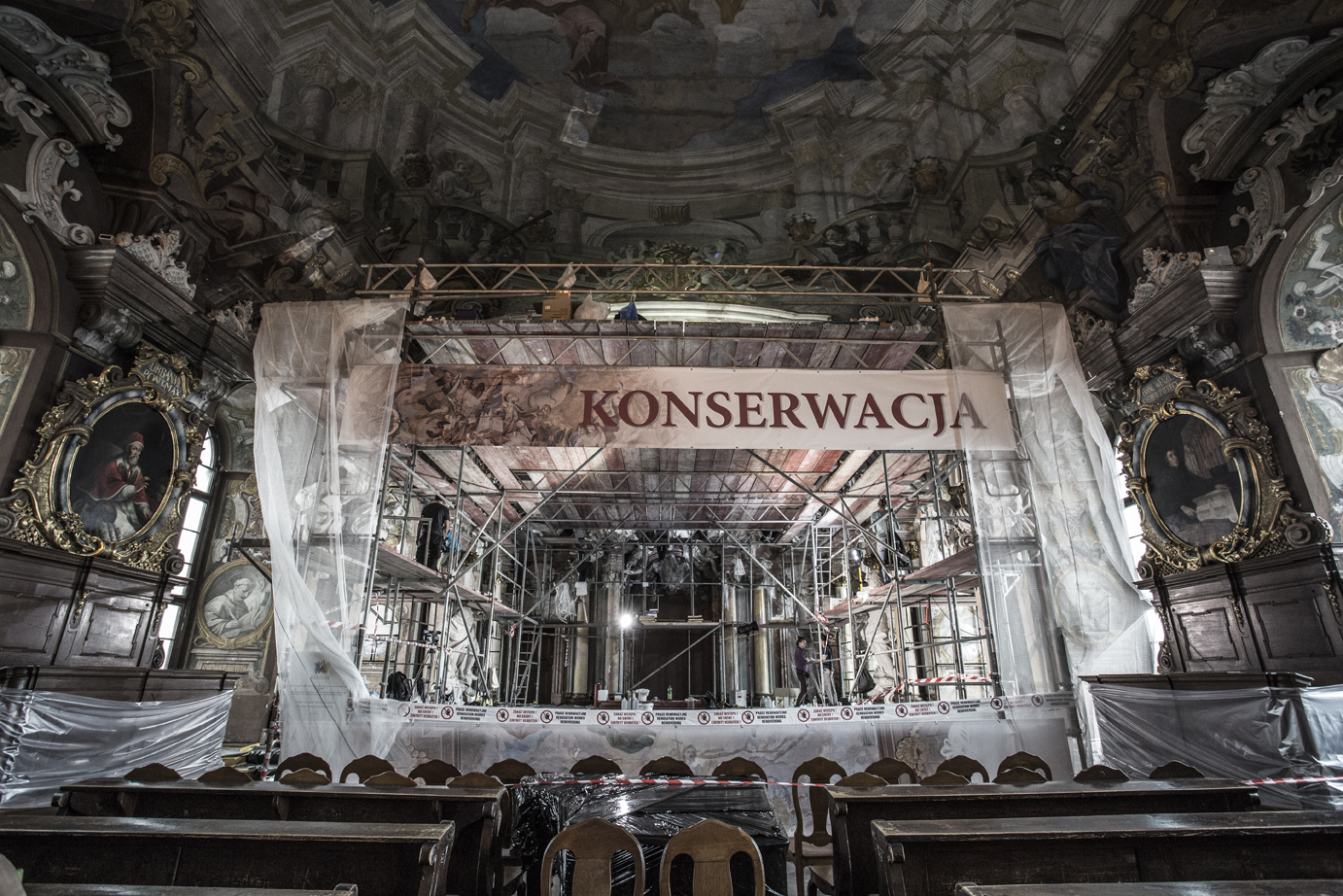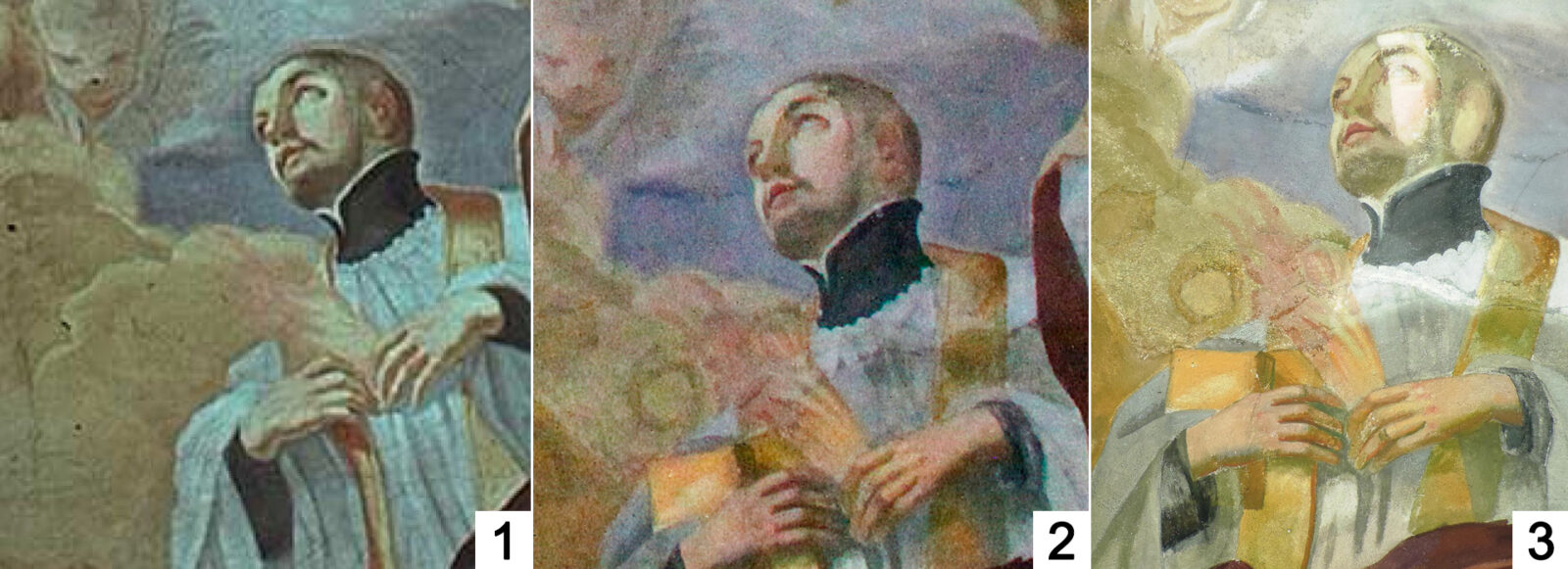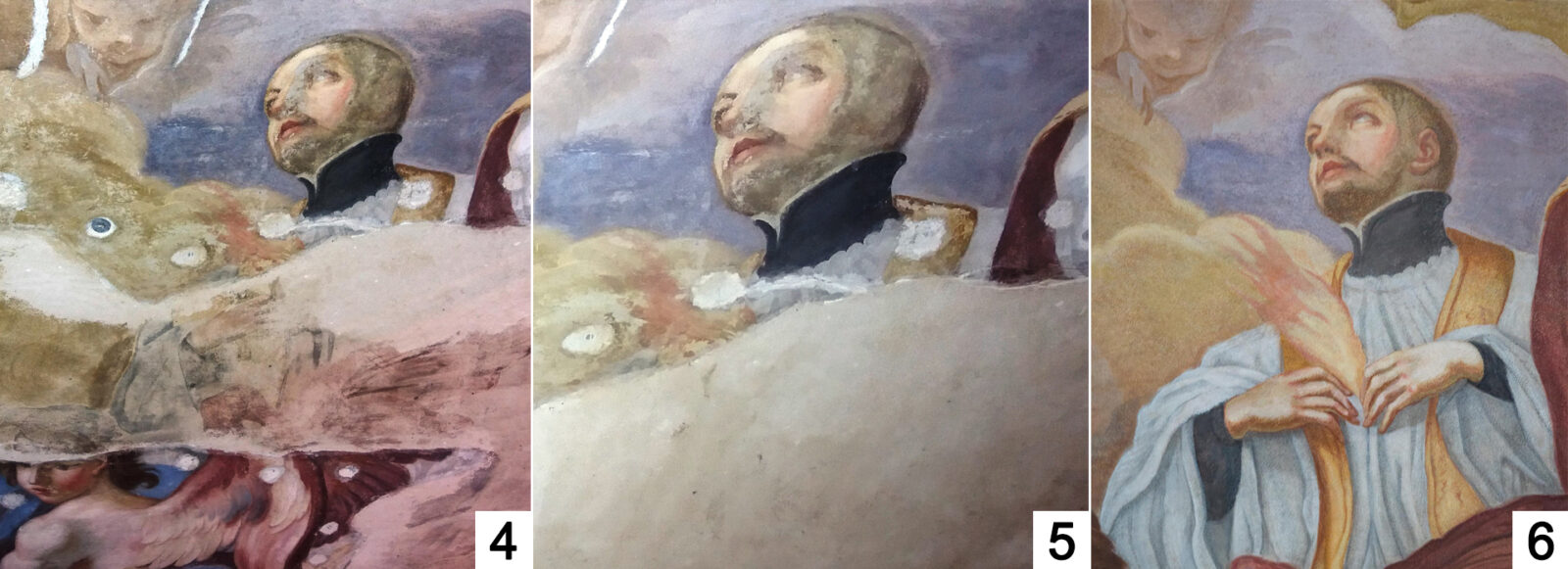
The dais
The central place on the dais is occupied by the sculpture of Leopold I, the Holy Roman Emperor, sitting on the throne. The two figures that are located on each side of the emperor – one of an old man holding a book and a mirror and the other of a woman with a hive – exemplify the ruler’s motto: “CONSILIO ET INDUSTRIA” (By Reason and Industry). It was the Industria herself who, thanks to the restoration, after seven decades retrieved her original attribute – the sceptre in the shape of an open palm with wings. Presumably, such shape reflects the ability of arriving at decisions very quickly. The spectre can be noticed in the photograph by Rudolf Jagush that was taken in 1944 [picture no. 1, on the right]. In the post-war photographs one can no longer notice the spectre [picture no. 2 – taken before the beginning of the restoration work in 2016] but based on the 1944 photograph, it was possible to recreate Industria’s attribute [picture no. 3].

It was St Francis’s painting that turned out to had been hiding a secret. In the original painting by Handke, St Francis is wearing a white alb and flames are coming out of his breast. These flames are sometimes interpreted as a burning torch [picture no. 1, on the left, by Rudolf Jagush, 1944]. During the World War II, some parts of the painting, including St Francis’s torso, were damaged and they needed to be reconstructed. The renovation carried out in the 1950s brought St Francis an attribute which was not present in the original. He was painted with a book held under his right hand [picture no. 2, taken before the beginning of the current renovation work]. In 2016 the restorers tried to uncover as much of the original as possible [pictures no. 3 and picture no. 4, during the technical conservation]. The elements added in the 1950s were removed and the surface was adapted for further reconstruction [picture no.5, before the aesthetic conservation]. Now St Xavier looks as Handke originally portrayed him [picture no. 6, after the completion of the renovation].





